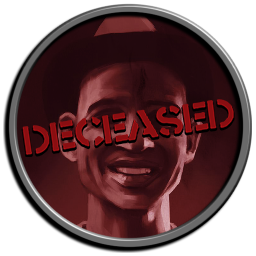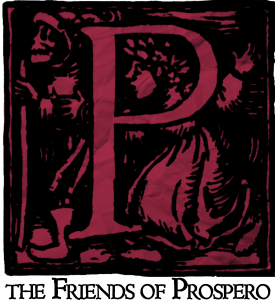BORN 1880 • DIED 1925
Jackson Elias was a writer specializing in books about strange and violent cults. He started life as an orphan in Stratford, Connecticut, in 1880 and learned to make his own way early in life. He had no living relatives and no permanent address.
His best-known book was Sons of Death, which exposed modern-day thuggees in India. He spoke several languages fluently and was constantly traveling. He was social and enjoyed an occasional drink. Elias was tough, stable, and punctual, unafraid of brawls or officials. He was mostly self-educated. He was, however, was a lifelong skeptic. While fascinated by cults and their ghoulish beliefs, he considered their members deluded and their evils to be of purely human origin.
Possessing a dark sense of humor, Elias often made sardonic wisecracks. Behind this veneer, he had a noble and warm nature, prompting him to take risks in protecting people he cared about or those who were unable to look after themselves.
In Peru, Elias had been using the pseudonym Jesse Hughes and was pretending to be a folklorist to avoid tipping off Augustus Larkin as to his real identity: that of an author researching the kharisiri death cult and discovering the true goals of Larkin and his henchman, Luis de Mendoza.
In May 1923, Elias began researching the disappearance of the famed Carlyle Expedition—a vanity project led by New York playboy Roger Carlyle.
The mutilated body of Jackson Elias was discovered on January 15, 1925, in room 410 of the Chelsea Hotel in New York City by his friends Nicodemus Ford, Jacque Brochet, and Ace Holder.
The Books of Jackson Elias:
Skulls Along the River (1910)
Elias’ first book (though he had some individual stories published before this) is an unvarnished and very readable account of the author’s journey to the headwaters of the Amazon River in search of a legendary tribe of headhunters, the Jivaro-Shuar. While some of the content is shocking, Elias’ skill as a writer and gift for language are clear, as is his ability to gain the trust of the natives, and the book was a solid seller.
Masters of the Black Arts (1912)
An expanded collection of articles written by Elias, this book is an unsystematic compilation of various sorcerers throughout history. Topics included Hecate, Egyptian curses, Albertus Magnus, Kabbalah, Agrippa, Chinese geomancy, John Dee’s angel communication, von Reichenbach and the Odic force, and the Golden Dawn. While by no means comprehensive, Elias’ strength is his ability to write for a general audience without any sense of condescension. Readers will note his overriding skepticism and disdain for charlatans.
The Way of Terror (1913)
Elias compares the methods by which a number of cults indoctrinate and control their membership. The comparisons reflect a number of core practices common to such groups, including indoctrination, control of food, removal from regular society, etc. The author clearly sets himself in opposition to such practices and vehemently condemns modern movements that utilize them.
The Smoking Heart (1915)
Following up on his work in South America, Elias undertook a number of trips to Central America and the Yucatan in particular. Basing much of his work off of local oral tradition and interviews, the picture he paints of ancient Mayan society is in stark contrast to the utopian astronomer view currently in vogue. His most shocking suggestion is that many local religious practices are holdovers from before the Spanish conquest.
Sons of Death (1918)
This work examines the Thuggee in history and in modern times. Perhaps Elias’ most controversial work, Sons of Death, claims that the Thuggee cult was not extinguished by the British during the nineteenth century but had survived elsewhere (particularly in London and South Africa). During the course of his investigations, Elias claims to have joined a South African branch of the group and presents evidence that the group was still committing ritual murders.
Witch Cults of England (1920)
Elias spent a year in the United Kingdom researching witch trials and interviewing modern practitioners of what he terms witchcraft, generally solitary practitioners and fragments from the Golden Dawn or like groups. The book itself outlines the history, such as it is, of witchcraft in Great Britain up until the modern day. Elias’ portrayal of witches is sympathetic, and he views witch hysteria as the worst sort of mob mentality.
The Black Power (1921)
This work was an expanded and revised version of The Way of Terror, incorporating a wider number of cults, particularly ones from Asia and Africa. The work is a clear improvement over the original and is more tightly edited and organized. While Elias still clearly despises those who exploit others via cultic practices, he allows his evidence to persuade readers rather than simply condemning them himself.
Terror! In the Andes: Lake Titicaca’s Death Cult (1923), co-authored with Nicodemus Ford
The final work of Jackson Elias was a detailed examination of the Kharisiri death cults found in the highlands of Peru and Bolivia. Although still written in the academic voice of a skeptic, Terror! In the Andes takes a more literal tone when detailing the history behind the cults, their practices, and the experience he and his co-author had while researching the book.
The Friends of Prospero
Peru: Episode VIII • Peru: Episode VII • Peru: Episode VI • Peru: Episode V • Peru: Episode IV • Peru: Episode III • Peru: Episode II • Peru: Episode I
The Two-Headed Serpent

